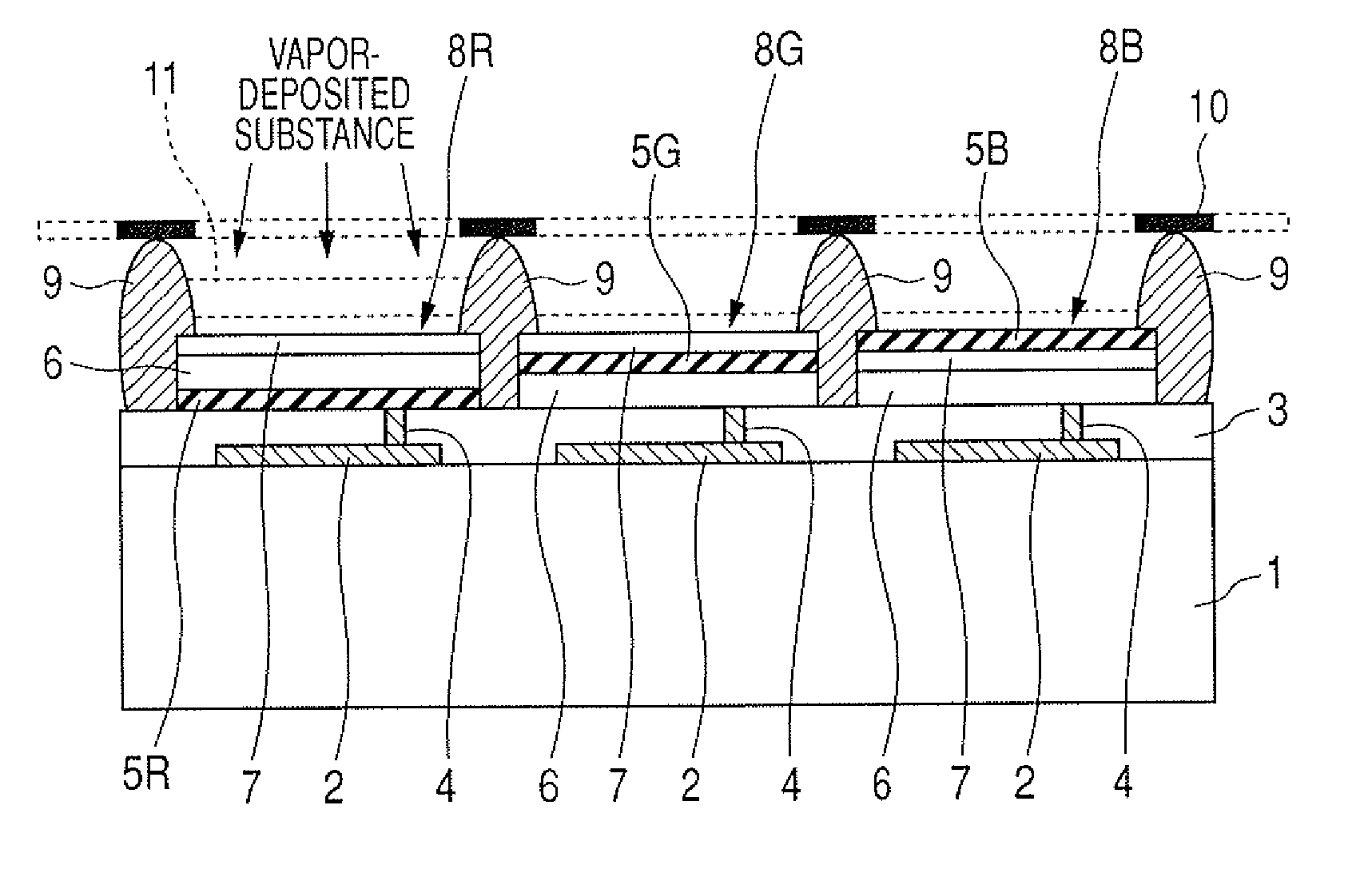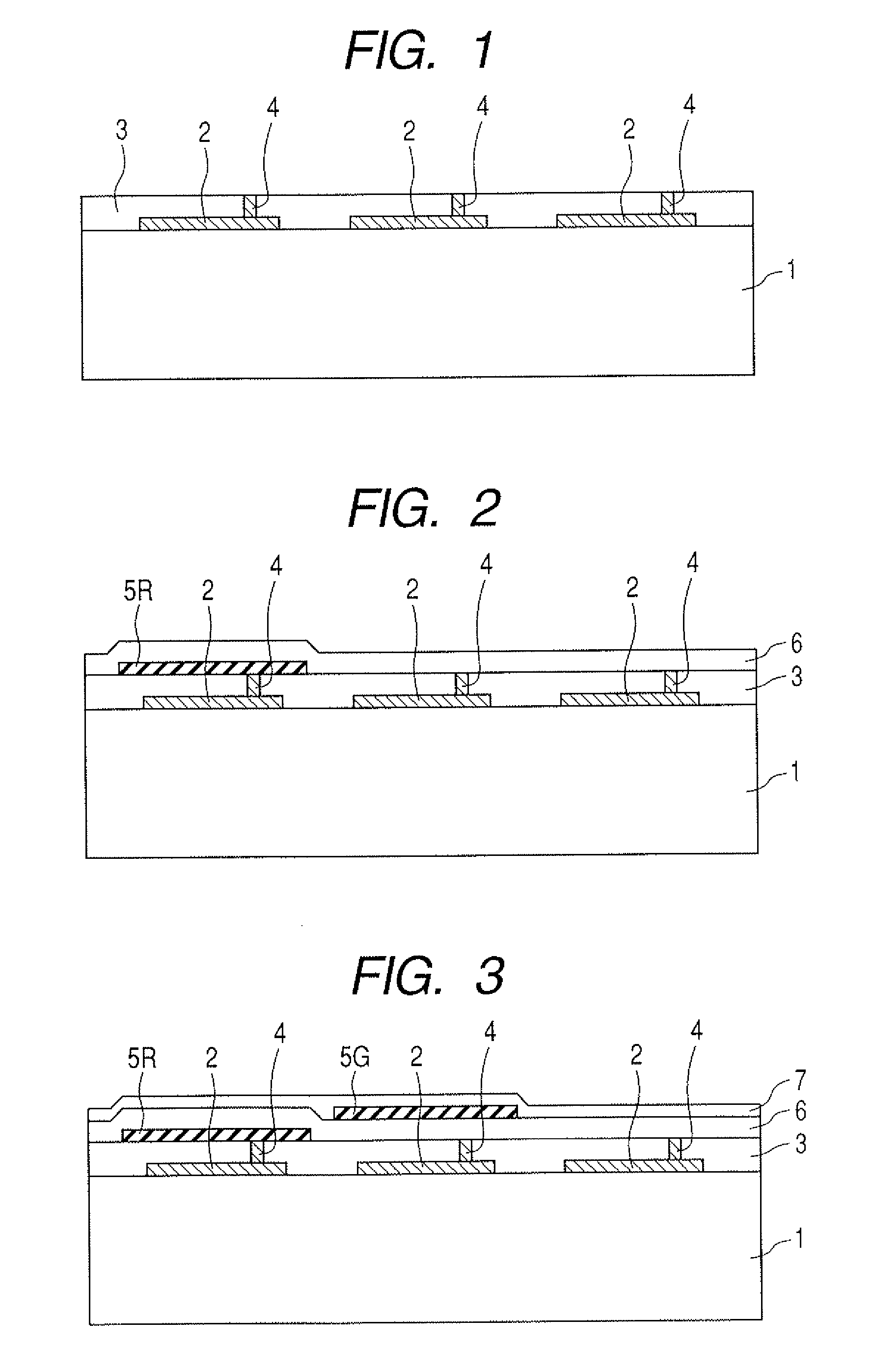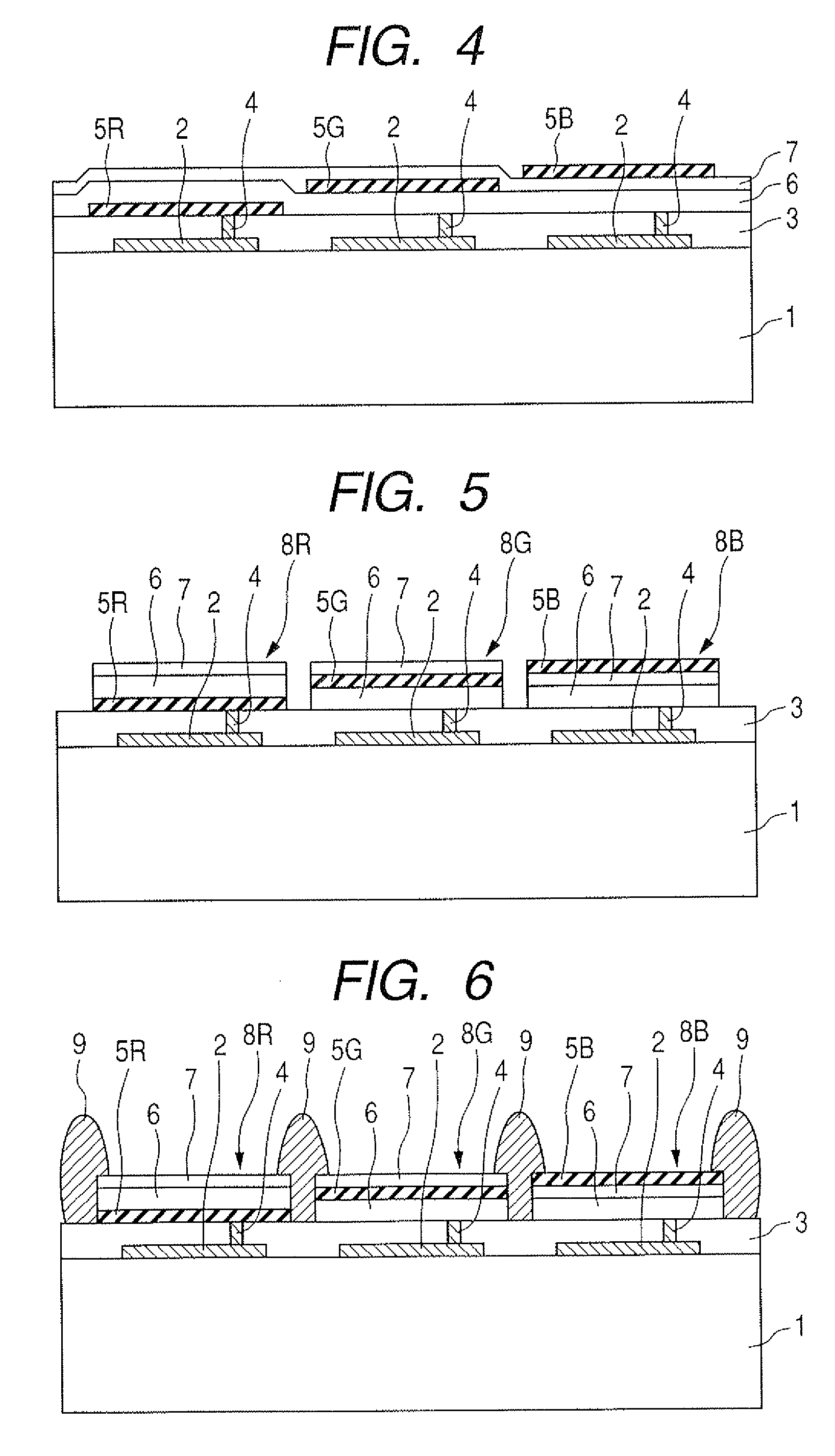Organic light-emitting elements of LED with light reflection layers in each spaced on opposite sides of transparent conductive layer
a technology of organic light-emitting elements and conductive layers, which is applied in the manufacture of electrode systems, electric discharge tubes/lamps, and discharge tubes luminescnet screens, etc., can solve the problems of complex process of varying the thickness of transparent electrodes for every different color, needing high driving voltage, and various problems of above described conventional technologies, so as to improve the light extraction efficiency of organic light-emitting elements and process simple
- Summary
- Abstract
- Description
- Claims
- Application Information
AI Technical Summary
Benefits of technology
Problems solved by technology
Method used
Image
Examples
first embodiment
FIG. 1 to FIG. 9 are schematically sectional views showing the sequential steps of a process of producing an organic light-emitting device according to a first embodiment of the present invention.
The organic light-emitting device according to the first embodiment of the present invention has organic light-emitting elements which can emit the lights of three colors (three primary colors) of red, green and blue respectively formed on a substrate. However, such an organic light-emitting device can be also produced in a similar production process to that of the above organic light-emitting device, as is further provided with an organic light-emitting element which can further emit another color like a white color, in addition to the three primary colors of red, green and blue. Each organic light-emitting element in the organic light-emitting device is a top-emission element which emits the light emitted from a light-emitting layer in a direction opposite to the substrate.
An organic ligh...
second embodiment
FIG. 10 is a schematic view showing a diagrammatic structure on the way of a process of producing an organic light-emitting device according to a second embodiment of the present invention. In addition, FIG. 10 relating to the second embodiment corresponds to FIG. 5 relating to a first embodiment.
As is shown in FIG. 10, the organic light-emitting device according to the second embodiment has an ITO film (third transparent conductive layer 14) stacked on the outermost surfaces (light-extracting side) of the first electrodes 8R, 8G and 8B of organic light-emitting elements for respective colors, which is a different point from the organic light-emitting device according to the first embodiment (see FIG. 5).
That is, on the reflection layer 5B for a blue light-emitting element in the first embodiment, further a third transparent conductive layer 14 made of vapor-deposited ITO having a thickness of 10 nm is formed to become the first electrode 8B for blue in the present embodiment. In ad...
third embodiment
FIG. 11 is a schematic view showing a diagrammatic structure of an organic light-emitting device according to a third embodiment of the present invention. In addition, FIG. 11 relating to the third embodiment corresponds to FIG. 9 relating to a first embodiment.
As is shown in FIG. 11, the organic light-emitting device according to the third embodiment has a semi-transparent reflection layer 15 provided the lowest surface (opposite side of a light-extracting side) of a second electrode 12 of an organic light-emitting element for each color, which is a different point from an organic light-emitting device according to the first embodiment (see FIG. 9). The semi-transparent reflection layer 15 is made of a conductive material and constitutes the second electrode in the present embodiment. Except the above point, the organic light-emitting device according to the third embodiment has an approximately similar structure to that of the organic light-emitting device according to the first e...
PUM
 Login to View More
Login to View More Abstract
Description
Claims
Application Information
 Login to View More
Login to View More - R&D
- Intellectual Property
- Life Sciences
- Materials
- Tech Scout
- Unparalleled Data Quality
- Higher Quality Content
- 60% Fewer Hallucinations
Browse by: Latest US Patents, China's latest patents, Technical Efficacy Thesaurus, Application Domain, Technology Topic, Popular Technical Reports.
© 2025 PatSnap. All rights reserved.Legal|Privacy policy|Modern Slavery Act Transparency Statement|Sitemap|About US| Contact US: help@patsnap.com



